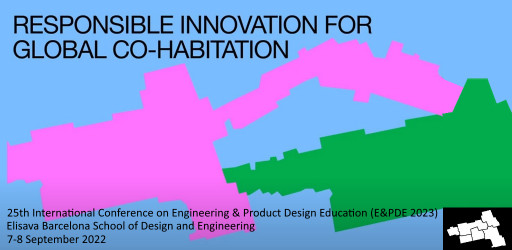MATERIAL DESIGN FROM INDUSTRIAL WASTE: AN EDUCATIONAL APPROACH
Ordóñez, Isabel; Gazulla, Cristina; Gonzalez, Marta; Koch, Martin
Type:
Year:
2023
Editor:
Buck, Lyndon; Grierson, Hilary; Bohemia, Erik
Author:
Series:
E&PDE
Institution:
Elisava University school of design and engineering, Barcelona, Spain
Section:
The effect that design and engineering have on global co-habitation
DOI number:
ISBN:
978-1-912254-19-4
Abstract:
The demand for moving to more sustainable production has led to an increased need for industrial design students to understand the requirements and possibilities of circular economy practices. One of these practices is waste minimization or prevention through reuse or remanufacturing. This article presents the experience of using industrial waste to develop new materials. The experience aims to use creativity to have a positive impact on the industry, by providing circular economy solutions. The project is done within a third year Material Technologies course at an Industrial Design Engineering (IDE) program. The results summarized in this article are based on the experience of developing these new materials for 4 years, with a total of 180 students. In the scope of the challenge presented to the students, collaborating local industry would provide a material waste, facilitate guided visits to their production facilities and give feedback in the middle of the term and at the final presentation by the students. Students had to use the provided waste to develop a useful material out of it. The resulting material properties were analysed and characterized at the laboratory and relevant fields of application for the new material were identified. In a parallel course they were asked to develop one particular application of the new material in a specific application field, and to perform a Life Cycle Assessment (LCA) of the new product developed, to identify possibilities for improvement of both the product and the material, applying an iterative design approach. The LCA was also required to compare the environmental profile of their proposal with existing solutions with an equivalent functionality, to validate the expected environmental benefits of using these recycled materials in those specific applications. During the years this challenge has been presented with the collaboration of four local industries: two manufacturers from the textile sector, one provider of components to the automotive sector and one service-provider of industrial apparel cleaning. The results have varied greatly, counting with 12-20 suggestions for new materials for each industrial waste used. Of these results, 3 proposals could be considered viable, environmentally beneficial and interesting enough for further development for each material application. However, during this period, only one project, from the textile industry, specifically from the industrial laundry sector, was later successfully continued in collaboration with the industrial partner. This seems to corroborate literature findings that indicate that the main barrier to repurposing industrial waste is the lack of demand for the newly developed material/product. We present this experience since we consider that it has engaged students in the difficulties of repurposing industrial waste, it allows them to consider that the applications of said material developed are not always more sustainable than a competing primary material that they aim to replace. Finally, students learn interactively about the material properties their designs rely on. This experience might be useful to other IDE academics, regarding options for how to include waste recovery into their educational practices.
Keywords:





